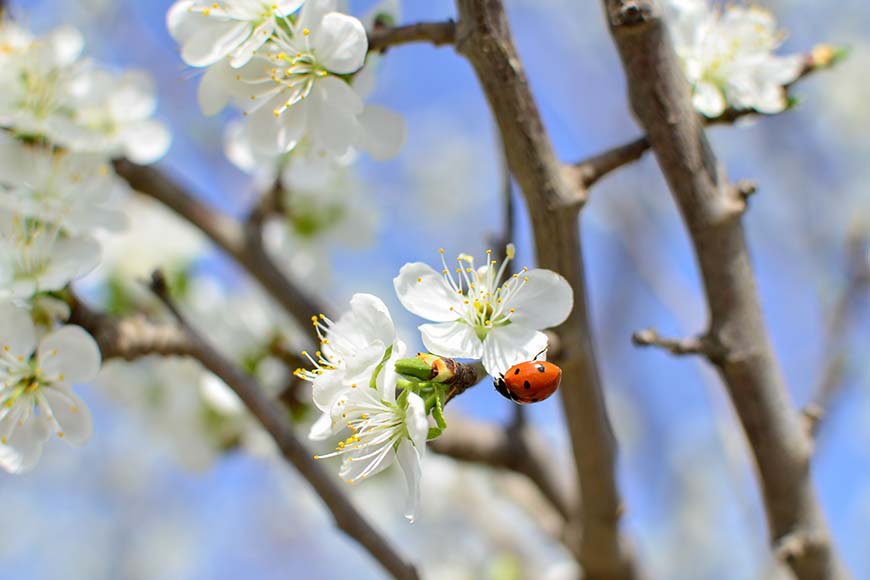
When you’re working in the garden it is nearly impossible to not come across a few friends with six legs, eight legs, and too many legs to count. These bugs come in all shapes, sizes, colors, and roles in the garden.
Bugs are an important part of the ecosystem and play a vital role in pollinating your plants, but not all creepy crawlies have your garden’s best interest in mind. Some bugs are better kept at bay while others should be invited in with open blooms.
If you’ve wondered which are helpful and which are harmful, this article will give you a helping hand… or six. We’ll help you identify some common garden bugs, explain which are most beneficial (and which are not), and point out some plants that invite more pollinators into your garden.
Bugs That Help Your Garden
You’ve probably heard the term “beneficial pollinator,” but have you thought about beneficial bug predators and beneficial parasitizes? All of these insects help boost your garden’s productivity, increase fruit and veggie yield, and give your blooms a reason to bloom, big, bright, and bold.
Which bugs should make you smile when you see them hanging out in the backyard among your plants?
1. Ladybugs
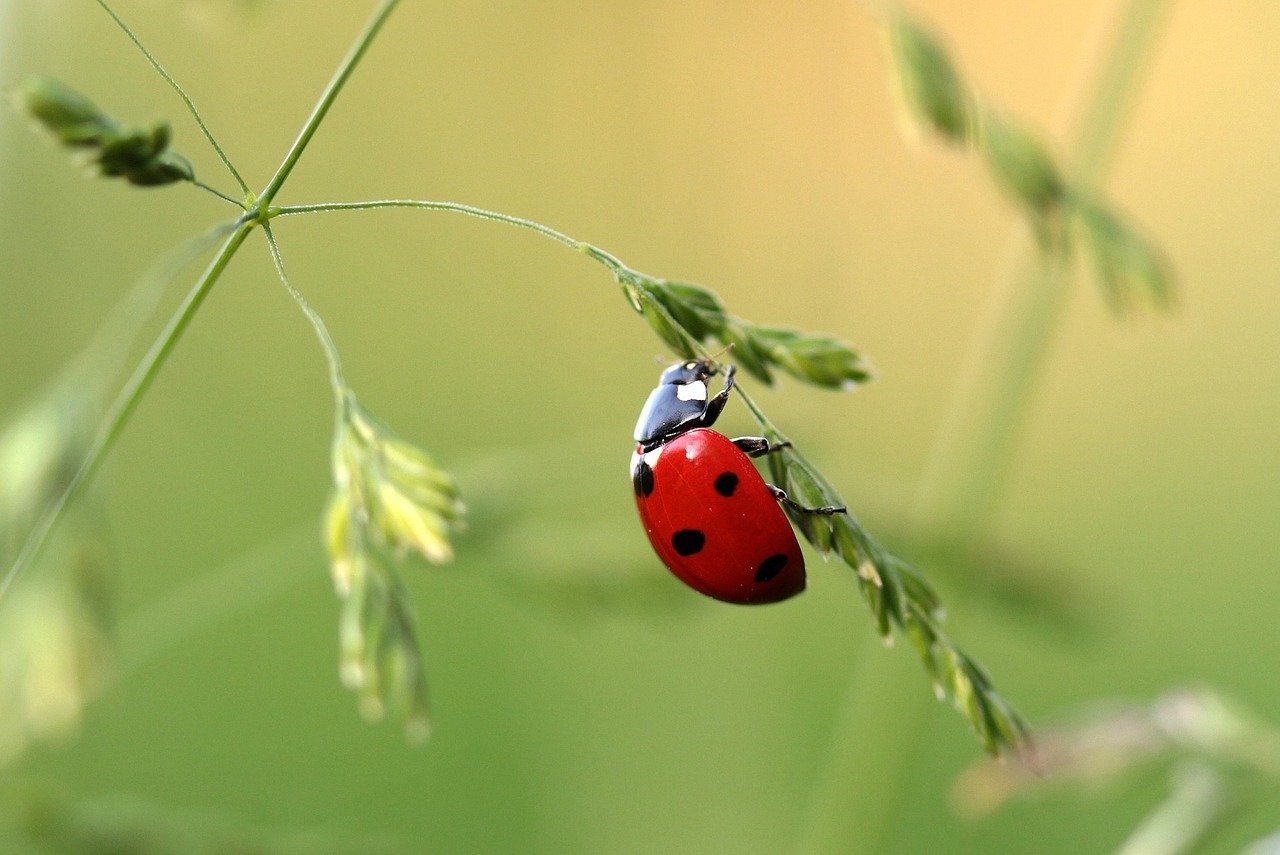
There’s nothing ladylike about the way they wage war with aphids. These ruthless predators spend the first part of their lives as larvae munching on up to 40 aphids per hour.
What’s wrong with aphids? These tiny bugs are like nutrient vampires. They suck the liquids out of plants, depleting them of nutrients and preventing them from producing flowers and fruit.
How to Attract Ladybugs to Your Garden
Want to attract ladybugs to your garden? These aphid assassins love:
- Cosmos
- Calendula
- Marigolds
- Yarrow
2. Spiders
Most people dislike spiders, but as a gardener, you may find them quite useful (even charming). Spiders trap and eat insects that you don’t want lingering around your garden beds. They enjoy aphids, beetles, mosquitoes, and flies.
As they gobble up bugs, they are reducing the potential spread of fungal and bacterial diseases to your plants that are spread by unhelpful bugs. Wolf spiders are a top choice for keeping your garden green.
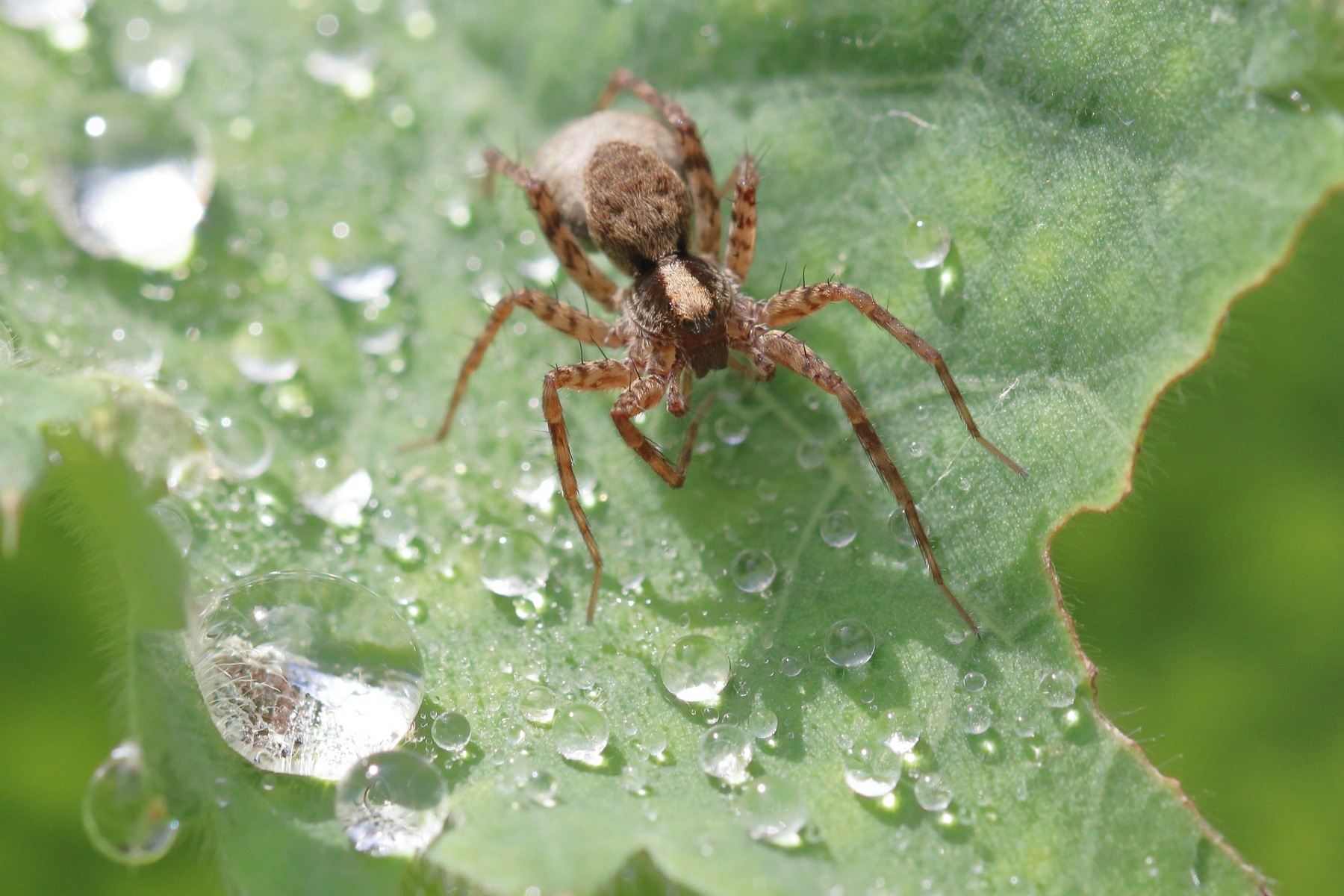
How to Attract Spiders to Your Garden
Spiders love lush shrubs where they can hang their webs and camouflage themselves from unsuspecting prey. Having a feature of interest that will lure bugs in is also helpful. What shrubs should you invest in to attract the most beneficial arachnids?
3. Parasitic Wasps
There’s nothing more creepy than coming across a hornworm with its back covered in parasitic wasp eggs. Instead of panicking as the hornworm goes about its business unaware that it has a busload of eggs on its back, just leave it be (unless it’s on your tomato plant--then move it to another spot in the garden).
Trichogramma wasps, unlike arachnids (which lay eggs on hornworms), prey on other harmful creepy crawlies such as the gypsy moth caterpillar, grasshoppers, Japanese beetles, corn borers, squash bugs, and Mexican bean beetles.
How to Attract Parasitic Wasps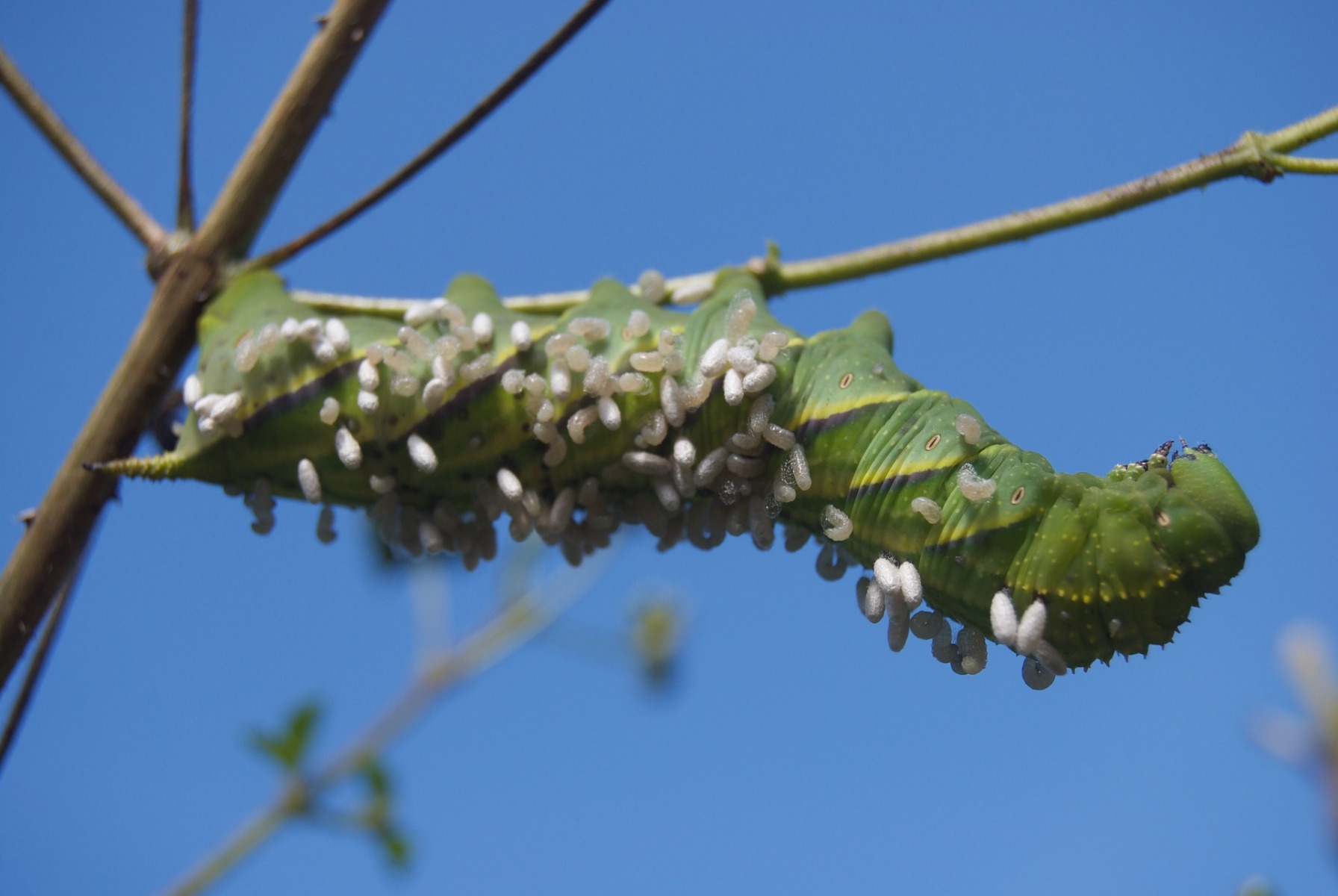
Despite their appearance and strange choice of nests, parasitic wasps enjoy the finer flowers in life where they can slurp up some nectar. These plants include:
4. Hoverflies
These flies may look like micro-yellow jackets or relatives of bees, but they are their own beneficial species. These cute bugs not only spread pollen from plant to plant, but when their larvae hatch, they snack on aphids, beetles, and thrips.
How to Attract Hoverflies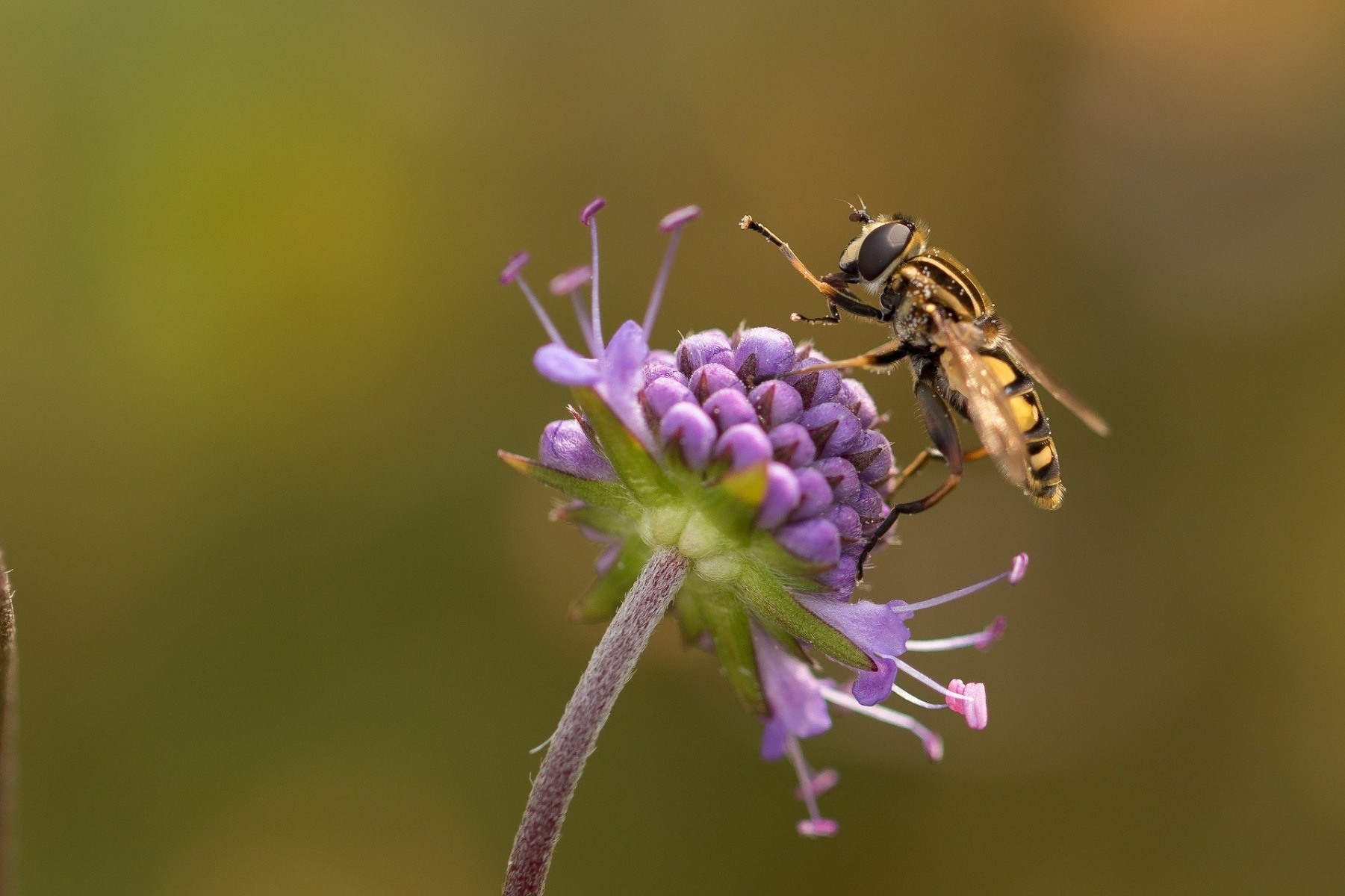
If you are in desperate need of aphid control, you will want to call in a troop of hoverflies. All you need is a mix of easy-to-grow flowers like:
- Bachelor buttons
- Catnip
- Sweet alyssum
- Almost any herb
- Garlic chives
5. Green Lacewings
These delicate-looking insects are as delightful to look at as they are powerful when it comes to destroying bugs you do not want hanging out on your plants. Many gardeners choose green lacewings as a way to avoid using chemicals in the garden.
These small but mighty bugs love to snack on mealybugs, thrips, mites, whiteflies, aphids, caterpillars, and psyllids. They also chomp down other insects’ eggs and pollinate your plants as they go. Their babies are even ferocious, consuming more than 200 insects every week.
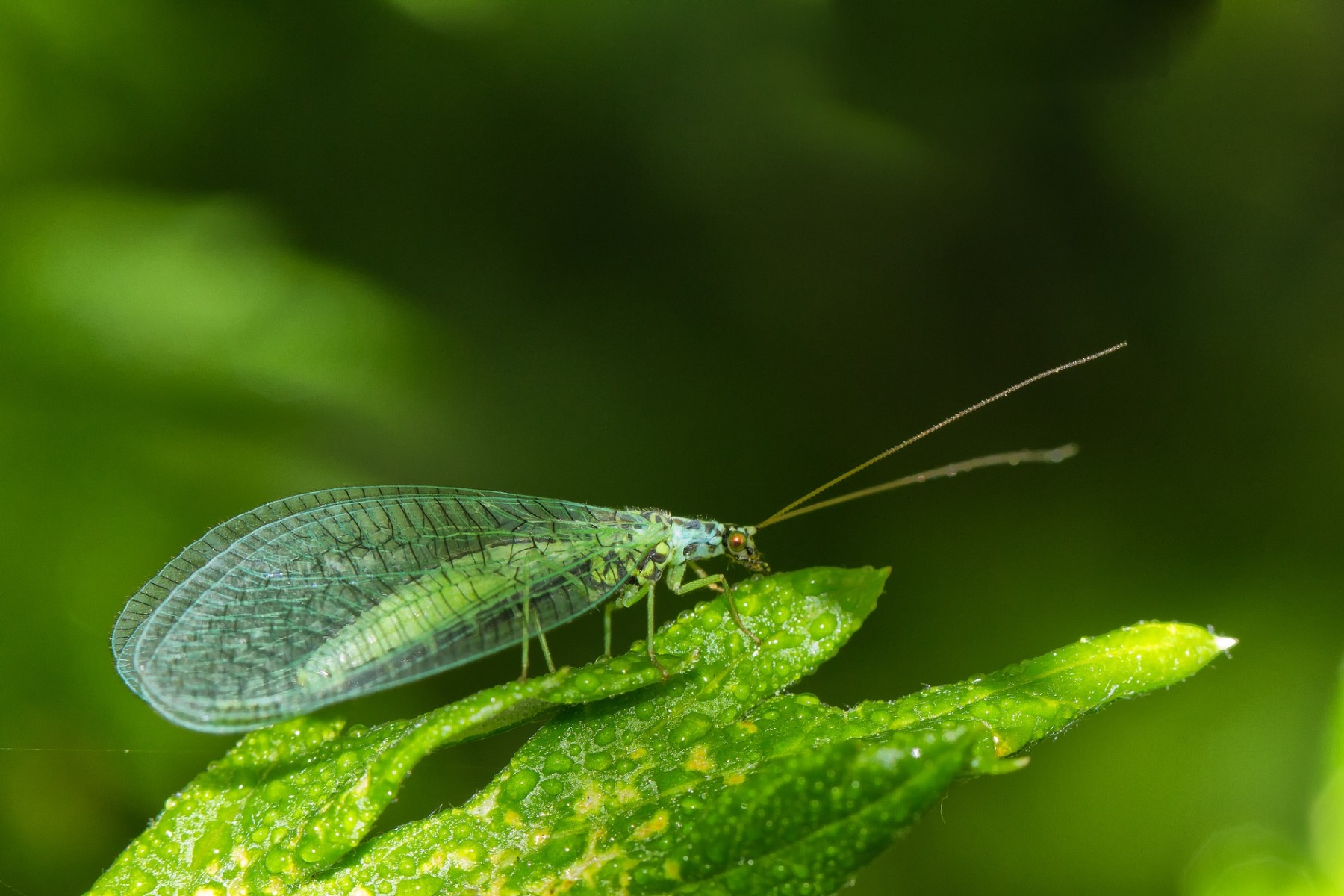
How to Attract Green Lacewings to Your Garden
Green lacewings have quite the sweet tooth… or “sweet sucker” if you want to be specific. You can attract more of them to your garden by spraying a water/sugar solution nearby your aphids issue or other bugs you want to target.
Bugs That Harm Your Garden
Aphips: Plant vampires that pull nutrients from your plants and prevent them from flowering and fruiting. Bad infestations can kill plants. These tiny bugs look like miniature, semi-transparent, grasshoppers, small gray dots, or small orange dots.
Thrips: Like aphids, thrips love to suck down the juices of your plants’ fruits, flowers, and foliage. They leave ugly splotches that can turn into scars or even kill your plants. If your plant’s leaves are turning pale, flip over the leaf and look for semi-transparent green, orange, or brown bugs.
Tomato hornworms: These chubby caterpillars live for chopping on your tomato leaves and fruit. They can quickly tear through an entire full-grown plant’s foliage in a matter of days. They also make your tomatoes inedible while making the plant more susceptible to disease.
Cutworms: As their name implies, cutworms have a strong set of chompers that they use to munch through the stems of your seedlings. You can protect your plants from cutworms by wrapping the plant’s stem with aluminum foil or cardboard. Removing excess plant debris from the garden helps, too.
Mexican bean beetle: This lady-bug look alike will chew on your foliage from the underside. They leave leaves looking like lace and leaving them unable to pull energy to perform photosynthesis.
Don’t Let Pests Bug Your Garden
It can feel like a violation when bugs destroy the plants you’ve invested time, energy, and money in. Knowing the difference between the good, the bad, and the downright ugly can save you stress and save your plants.
With the right bugs, you can keep these pests in their place. Attracting beneficial bugs is as simple as choosing a variety of plants that they appreciate.
